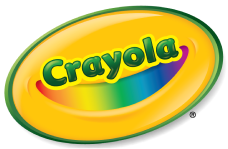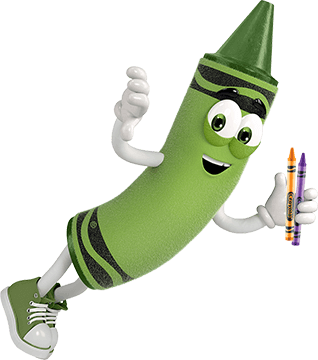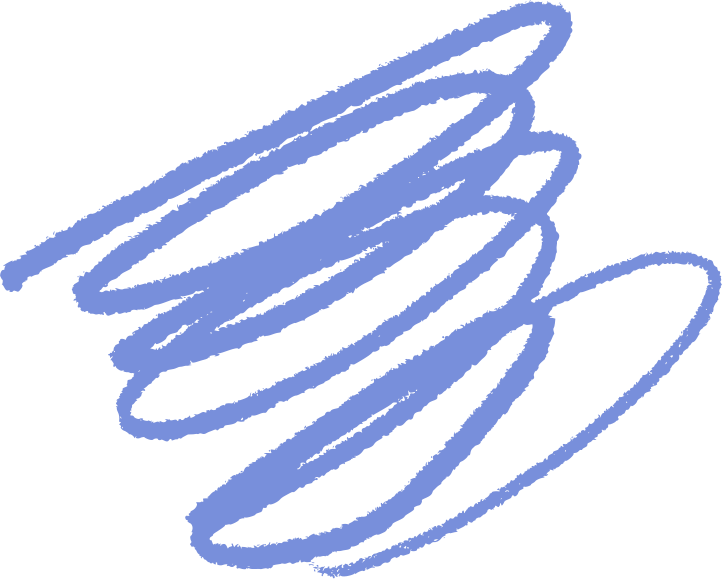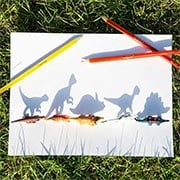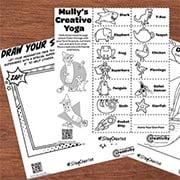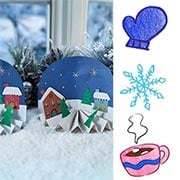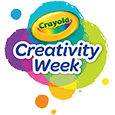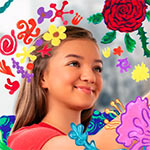Primary Colors: Primary colors are the foundation for creating other colors. They cannot be created by mixing other colors together. The primary colors are:
- red
- blue
- yellow
Secondary Colors: Secondary colors are created by mixing two primary colors.
- red + yellow = orange
- yellow + blue = green
- blue + red = violet
Tertiary Colors: Tertiary colors are created by mixing primary colors and adjacent secondary colors on the color wheel.
- red + orange = red orange
- green + yellow = yellow green
- blue + violet = blue violet
Need a visual? Learn more about blending and mixing colors on Crayola's color theory page.
If you have additional questions, we would love to hear from you! Feel free to call or text us at 1-800-CRAYOLA weekdays between 9 AM and 4 PM Eastern Time. If you would prefer to send us an email, visit our contact us page.
Related Questions
Explore answers to common questions, helpful stain removal tips, and creative ideas for making the most of our art supplies and free resources!
-
Throughout Crayola's history, several crayon colors have been retired, marking significant moments in the evolution of our vibrant palette.
1990
For the first time in Crayola history, eight colors were retired and placed in the Crayola Hall of Fame: blue gray, green blue, lemon yellow, maize, orange red, orange yellow, raw umber, and violet blue. Eight new colors were added: cerulean, dandelion, fuchsia, jungle green, royal purple, teal blue, vivid tangerine, and wild strawberry.2003
Celebrating a century of bringing color to the world, Crayola introduced four new colors named by Crayola fans! To make room for the new hues, we bid farewell to blizzard blue, magic mint, mulberry, and teal blue. The four new colors that were introduced are: inchworm, jazzberry jam, mango tango, and wild blue yonder. Kudos to our hue heroes - the consumers who voted in the "Save the Shade" campaign, ensuring burnt sienna stayed in the pack.2017
To mark National Crayon Day on March 31st, we announced Dandelion was leaving the pack. To honor this iconic color, we sent Dandelion on a retirement tour to his favorite places. His replacement, Bluetiful, was announced on May 5, 2017.Looking for more historical facts about our colorful company? We've got them on the Crayola History page!
-
Color Wonder is a patented mess-free creative system of inks and paints, developed by Crayola scientists.
Is Color Wonder Safe?
- Just like all Crayola products, Color Wonder is nontoxic.
What makes Color Wonder different from Washable Markers and Paints?
- Color Wonder inks and paints are clear, and colors appear only on special Color Wonder paper. Kids love to watch the colors magically appear, and parents love the fact that Color Wonder inks and paints will not appear on skin, walls, or carpet.
What Color Wonder products are available?
- There are so many ways to create with Color Wonder! With Color Wonder markers, paints, and stampers the possibilities are endless. Learn more about the Crayola Color Wonder line.
Can I reuse my Color Wonder Paper?
- You cannot reuse the same piece of Color Wonder paper twice.
-
Silly Putty is made primarily from silicone and color pigments. Silly Putty was discovered in 1943 by James Wright and introduced to the public in 1950 by Peter Hodgson. Crayola acquired the exclusive manufacturing rights to Silly Putty in 1977. The formulas are considered proprietary.
-
What are skin tones?
Your skin tone is the genetic amount of melanin, naturally occurring dark brown or black pigments, in the outermost layer of your skin. Skin tones can change over time for various reasons.
What is your skin tone?
There are 3 traditional skin tones: Light, Medium, and Deep.
- Light or fair skin tone: Contains a small amount of melanin within the skin.
- Medium skin tone: Contains a fair amount of melanin within the skin, is a neutral color, and has a beige appearance. This skin tone is often referred to as an “olive” color.
- Deep skin tone: Contains a large amount of melanin within the skin.
What are undertones?
Undertones are the natural colors underneath the surface of your skin. Because undertones are under the surface of the skin, you can have the same skin tone as another person, but have a completely different undertone. Undertones are not based on skin tone. For instance, a light skin tone can have a warm undertone and a deep skin tone can have a cool undertone. Also, undertones remain the same, even when you tan. There are 3 traditional undertones: Rose, Almond, and Golden.
- Pink, blue, and/or red hues under the skin = Rose, pink, or cool undertone
- A mixture of warm and cool hues typically the same color as your skin tone = Almond, neutral, or olive undertone
- Peach, yellow, and/or gold hues under the skin = Golden or warm undertone
What is your undertone?
You can identify your undertone by using the color of your veins. In natural light, what color are the veins under your skin on the inside of your arm or wrist?
- Blue and/or purple veins = Rose or cool undertone
- Colorless, same color as your skin, and/or a combination of blue and green veins = Almond or neutral undertone
- Green and/or olive veins = Golden or warm undertone
Tips for selecting your Crayola® Colors of the World® skin tone crayon color:
- Check out the color panels on the side of the Colors of the World crayon box.
- Match: Use crayon box color panels or create color swatches.
- Select: Pick colors closest to your skin tone.
- Color: Draw your #TrueSelfie with your unique colors!
Another way to find your skin tone crayon is to color a small area on a piece of paper with the crayon colors closest to your skin tone. Compare the areas with the inside of your arm or wrist and select the crayon color that best matches your skin tone.
-
As we deepen our commitment to sustainability, we're researching what programs will make the most significant impact and help us advance our sustainability goals, like our commitment to significantly reduce emissions from our business operations by 2030.
We have already taken several steps to make our products and operations more sustainable by focusing our efforts on renewable energy and packaging initiatives.
- Renewable Energy: The 20-acre solar farm on our Crayola campus in Pennsylvania provides the electricity to make 1 billion crayons, 700 million markers a year, and 120 million jars of paint.
- Plastics Reduction: In the last 10 years, we've redesigned our broad line markers to save an estimated 2 million pounds of plastic versus its previous design.
- Packaging: We make our marker Classpack packaging with 100% recycled cardboard. Starting in 2023, this packaging, along with crayon sleeves, will be made with natural cardboard instead of bleached cardboard, which will reduce C02e emissions by an estimated 100 metric tons per year.
- Carbon Footprint: Crayola, through our parent company Hallmark, joined the Science Based Target initiative, a collaboration of global nonprofit organizations, businesses, and world governments that set goals to limit global warming to not exceed 1.5°C. To achieve this, participating organizations will need to reduce carbon emissions significantly by 2030. Crayola sources raw materials locally and manufactures many crayons and markers close to where they are used, which helps reduce the carbon footprint. In fact, Crayola has reduced CO2e emissions from our company-owned facilities' direct and indirect energy sources by 82% since 2019, with investments in renewable energy, as well as efficiencies in our US manufacturing process. (Direct energy includes the gasoline, oil, natural gas, etc. used while indirect emissions are created when the energy is produced but not where it is used.)
- Reforestation: Most Crayola colored pencils are made from wood that is reforested in an 8,288 hectare pine farm in Brazil. Each year 300,000 seedlings are planted to restore the forest.
For more information on Crayola sustainability efforts, check Crayola's Sustainability Page.
